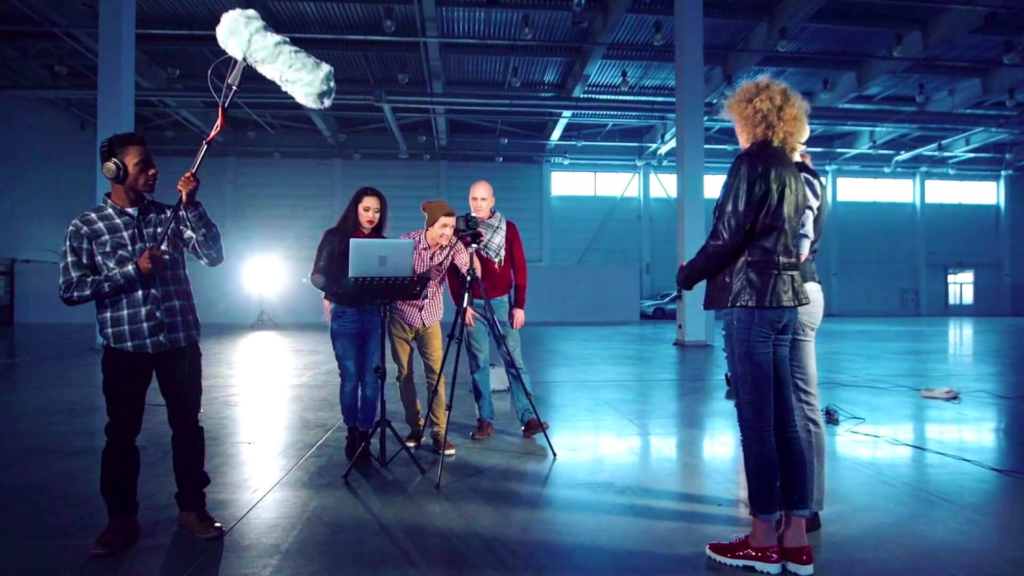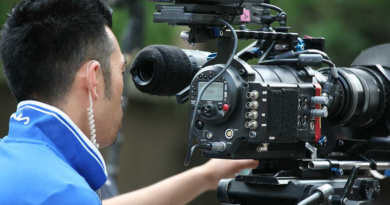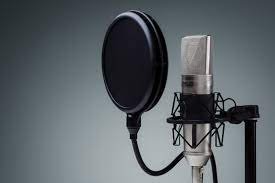Sound Assistant (1 years diploma)
Sound Assistant click here
Brief Job Description: Individuals at this job are responsible for setting-up/
disassembling sound equipment, aligning sound systems and capturing sounds as
per production requirements, largely under supervision
.
Personal Attributes: This job requires the individual to know basic principles of
sound and acoustics. The individual must be well-versed with the features and
handling specifications of sound equipment to be able to operate them
effectively during shoots/audio programmes. The individual must be able to
place/move equipment appropriately to ensure that the sound captured meets
expected quality standards, largely under supervision. In case of live shoots, the
individual must know how to operate the boom mic to capture sound/dialogue
unobtrusively with regard to the positioning of the camera/lighting.

Description
Acoustics Acoustics is the science of sound production, creation of effects and their
transmission
Budget Budget is an estimate of the total cost of production that may include a
break-up of cost components
Continuity Continuity represents the seamless transition from one shot to another
Copyright Laws A legal framework linked to intellectual property and the rights given to
creators of original products/ concepts
Creative Brief Creative brief is a document that captures the key questions that serve as
a guide for the production including the vision, objective of the project,
target audience, timelines, budgets, milestones, stakeholders etc.
Target Audience Group of people at whom content/ adverting is aimed. A target audience
is typically defined by age, gender, economic classification, geography and
any other relevant parameters
Timelines Timelines is a listing of dates by which the production milestones/stages
need to be completed
Sector Sector is a conglomeration of different business operations having similar
businesses and interests. It may also be defined as a distinct subset of the
economy whose components share similar characteristics and interests.
Sound concept Sound concept is a description of the overall sound experience for the
production
Sub-sector Sub-sector is derived from a further breakdown based on the
characteristics and interests of its components.
Vertical Vertical may exist within a sub-sector representing different domain areas
or the client industries served by the industry.
Occupation Occupation is a set of job roles, which perform similar/related set of
functions in an industry
Function Function is an activity necessary for achieving the key purpose of the
sector, occupation, or area of work, which can be carried out by a person
or a group of persons. Functions are identified through functional analysis
and form the basis of OS.

Sub-functions Sub-functions are sub-activities essential to fulfill the achieving the
objectives of the function.
Job role Job role defines a unique set of functions that together form a unique
employment opportunity in an organization.
Occupational Standards
(OS)
OS specify the standards of performance an individual must achieve when
carrying out a function in the workplace, together with the knowledge and
understanding they need to meet that standard consistently. Occupational
Standards are applicable both in the Indian and global contexts.
Performance Criteria Performance Criteria are statements that together specify the standard of
performance required when carrying out a task
National Occupational
Standards (NOS)
NOS are Occupational Standards which apply uniquely in the Indian
context.
Qualifications Pack
Code
Qualifications Pack Code is a unique reference code that identifies a
qualifications pack.
Qualifications Pack For Sound Assistant
Keywords /Terms Description
NOS National Occupational Standard(s)
QP Qualifications Pack
NSQF National Skill Qualifications Framework
NVEQF National Vocational Education Qualifications Framework
NVQF National Vocational Qualifications Framework
Qualifications Pack(QP) Qualifications Pack comprises the set of OS, together with the educational,
training and other criteria required to perform a job role. A Qualifications
Pack is assigned a unique qualification pack code.
Unit Code Unit Code is a unique identifier for an Occupational Standard, which is
denoted by an
Unit Title Unit Title gives a clear overall statement about what the incumbent should
be able to do.
Description Description gives a short summary of the unit content. This would be
helpful to anyone searching on a database to verify that this is the
appropriate OS they are looking for.

Scope Scope is the set of statements specifying the range of variables that an
individual may have to deal with in carrying out the function which have a
critical impact on the quality of performance required.
Knowledge and Understanding
Knowledge and Understanding are statements which together specify the
technical, generic, professional and organizational specific knowledge that
an individual needs in order to perform to the required standard.
Organizational Context Organizational Context includes the way the organization is structured and
how it operates, including the extent of operative knowledge managers
have of their relevant areas of responsibility.
Technical Knowledge Technical Knowledge is the specific knowledge needed to accomplish
specific designated responsibilities.
Core Skills/Generic
Skills
Core Skills or Generic Skills are a group of skills that are key to learning and
working in today’s world. These skills are typically needed in any work
environment. In the context of the OS, these include communication
related skills that are applicable to most job roles.
Description
NOS National Occupational Standard(s)
QP Qualifications Pack
NSQF National Skill Qualifications Framework
NVEQF National Vocational Education Qualifications Framework
NVQF National Vocational Qualifications Framework
Set-up, maintain and disassemble sound equipment
Description This OS unit is about setting up, testing, operating and disassembling sound equipment
and accessories
Scope This unit/task covers the following:
Preparing and arranging sound equipment and accessories (Equipment
includes: Microphones, Amplifiers, Playback and recording equipment,
Speakers, Splitters, Wireless communication devices, Batteries and cables,
Recording media, Recording equipment, Mixing consoles, Headphones, Storage
devices
Performance Criteria (PC) w.r.t. the Scope
Element Performance Criteria
Preparing and
arranging sound
equipment and
accessories

To be competent, the user/individual on the job must be able to:
PC1. set-up, operate and disassemble sound equipment and accessories in
accordance with requirements and recording schedules and under supervision
of the sound supervisor
PC2. conduct preliminary tests and technical run-throughs to ensure equipment is
in working order (e.g. infiltration from an outdoor recording)
PC3. fit microphones to contributors (artists, performers, field reporters,
commentators etc.) in a way that optimizes sound input
Knowledge and Understanding (K)
A. Organizational
Context
(Knowledge of the
company /
organization and
its processes)
The user/individual on the job needs to know and understand:
KA1. the quality and creative standards expected from the end-products and the
various forms they take
KA2. the production/recording dates to ensure the equipment is set up in advance
KA3. the planned layout of sound equipment, including the various origin and
destination points
KA4. the noise floor of the equipment being used
B. Technical
Knowledge
The user/individual on the job needs to know and understand:
KB1. basic principles of sound, acoustics and equipment signal flow
KB2. how to operate a range of sound equipment with regard to electrical and
mechanical safety considerations
KB3. how to operate outdoor (boom mic) and cordless (wireless communication)
sound equipment.
KB4. how to test sound equipment, identify issues/interferences and carry out
adjustments in accordance with requirements, largely under supervision
KB5. the features and handling specifications of microphones w.r.t. moisture,
background sound, optimum placement and polarity
KB6. how to place microphones, cables and accessories appropriately and
unobtrusively, largely under supervision
KB7. the power requirements for placement of power fittings (distribution,
requirements), recording and operating equipment (voltage, load, phases), and
techniques for safe testing
KB8. the techniques for installing and disassembling sound equipment safely and in
accordance to requirements
KB9. the various aesthetics of differing programs (e.g. live show), and how to deliver
the appropriate service
Skills (S) (Optional)
A. Core Skills/
Generic Skills
Writing Skills
The user/individual on the job needs to know and understand how to:
SA1. document the need for sound equipment repair, replacement or any special
requirement
SA2. label and demarcate sound equipment, where required
Reading Skills
The user/individual on the job needs to know and understand how to:
SA3. read recording schedules to ensure that equipment is set-up and ready for use
in accordance with timelines
SA4. read and understand relevant sound documentation including cue sheets,
creative and technical specifications
SA5. read users manuals, handling specifications and safety considerations to aid
the correct use and handling of sound equipment
Oral Communication (Listening and Speaking skills)
The user/individual on the job needs to know and understand how to:
SA6. collaborate with sound supervisors to understand creative and technical
requirements, and the planned layout of sound equipment
SA7. collaborate with sound supervisors to assess the studio/location properties
and determine the adequacy and suitability of sound equipment/accessories
SA8. conduct technical run-throughs for sound supervisors, recordists and boom
operators to ensure equipment is ready to use
SA9. communicate effectively the correct use of the microphone to contributors
including artists, performers, field reporters and commentators
B. Professional Skills Plan and Organize
The user/individual on the job needs to know and understand how to:
SB1. plan own work according to the requirements and agreed timelines
SB2. ensure that equipment repair/replacement is carried out prior to the recording
dates
Problem Solving
The user/individual on the job needs to know and understand how to:
SB3. identify any problems/faults in the equipment that could impede the successful
execution of recordings, and resolve them in consultation with the sound
engineers and the production team
Analytical Thinking
The user/individual on the job needs to know and understand how to:
SB4. determine the impact of the chosen sound equipment on the production and
post-production requirements of sound

Customer Centricity
The user/individual on the job needs to know and understand how to:
SB5. check that the equipment selected meets project requirements
Align the sound system
Description This OS unit is about aligning the sound systems prior to use in the production.
Scope This unit/task covers the following:
matching the interfaces between source and destination level, impedance,
polarity and format, and when needed, synchronization.
Performance Criteria (PC) w.r.t. the Scope
Element Performance Criteria
Matching the interfaces
between source and
destination level,
impedance, polarity and
format, and when
needed,
synchronization
To be competent, the user/individual on the job must be able to:
(The below activities are expected to be performed under supervision. However, small
projects/ routine activities may be performed independently)
PC1. ensure that interfaces between source and destination are matched in level,
impedance, polarity and format
PC2. route the test signal to the correct signal path to enable alignment of the
system
PC3. confirm that the level of test signal is correct for that application
PC4. produce test signals which bear the expected phase relationship to each other
PC5. correctly identify the origin of the received test signals
PC6. assess the test signal accurately for variations in level, phase, and frequency
and response, and log them accurately
Knowledge and Understanding (K)
A. Organizational
Context
(Knowledge of the
company /
organization and
its processes)
The user/individual on the job needs to know and understand:
KA1. the quality and creative standards expected from the end-products and the
various forms they take
KA2. relevant production dates and timelines, where appropriate
B. Technical Knowledge
The user/individual on the job needs to know and understand:
KB1. basic principles of sound, acoustics and equipment signal flow
KB2. how to operate a range of sound equipment with regard to electrical and
mechanical safety considerations
KB3. how to operate outdoor (boom mic) and cordless (wireless communication)
sound equipment.
KB4. how to test sound equipment, identify issues/interferences and carry out
adjustments in accordance with requirements
KB5. the features and handling specifications of microphones w.r.t. moisture,
background sound, optimum placement and polarity
KB6. how to use different types of test signals and identifying codes
KB7. the power requirements for placement of power fittings (distribution,
requirements), recording and operating equipment (voltage, load, phases), and
techniques for safe testing
KB8. the various aesthetics of differing programs (e.g. live show), and how to deliver
the appropriate service
Skills (S) (Optional)
A. Core Skills/
Generic Skills
Writing Skills
The user/individual on the job needs to know and understand how to:
SA1. document the requirements for sound alignment, where required
Reading Skills
The user/individual on the job needs to know and understand how to:
SA2. read recording schedules to ensure that testing, alignment etc. occurs in
accordance with timelines
SA3. read and understand relevant sound documentation including cue sheets,
creative and technical specifications
SA4. read users manuals, handling specifications and safety considerations to aid
the correct use and handling of sound equipment
Oral Communication (Listening and Speaking skills)
The user/individual on the job needs to know and understand how to:
SA5. collaborate with sound supervisors to understand creative and technical
requirements, and production requirements
B. Professional Skills Plan and Organize
The user/individual on the job needs to know and understand how to:
SB1. plan work according to the requirements and agreed timelines
Problem Solving
The user/individual on the job needs to know and understand how to:
SB2. identify any problems/faults in the equipment that could impede the successful
execution of sound alignment, and resolve them in consultation with the sound
engineers and the production team
Decision making
The user/individual on the job needs to know and understand how to:
SB3. select the equipment that will be used throughout the duration of the project
Customer Centricity
The user/individual on the job needs to know and understand how to:
SB4. check that your own work meets project requirements
Analytical Thinking
The user/individual on the job needs to know and understand how to:
SB5. have a keen eye for detail and maintain an aesthetic sense towards the final
output
Critical Thinking
The user/individual on the job needs to know and understand how to:
SB6. have precise attention to all the details while using different instruments
Capture sound
Description This OS unit is about capturing sound from various sources in accordance to production
requirements
Scope This unit/task covers the following:
Handle sound input devices and equipments (microphones / boom mics, preamplifiers, other supports)
Capturing sound
Performance Criteria (PC) w.r.t. the Scope
Element Performance Criteria
Handling sound input
devices and
equipments
To be competent, the user/individual on the job must be able to:
(The below activities are expected to be performed under supervision. However, small
projects/ routine activities may be performed independently)
PC1. handle/move sound input devices and equipment to capture sound in a way
that minimizes disturbances and optimises input
Capturing sound PC2. ensure that the captured sound/input matches the production requirements
and expected sound quality
PC3. ensure documentation and labelling of equipment, where appropriate
PC4. capturing sound at a comfortable level above the noise floor using a
compatible type of microphone w.r.t. the environment, which may
include live music, songs, interviews, dialogues, announcements,
commentariestroubleshoot at a basic level and involve in troubleshooting
Knowledge and Understanding (K)
A. Organizational
Context
(Knowledge of the
company /
organization and
its processes)
The user/individual on the job needs to know and understand:
KA1. the various sound sources / origin points
KA2. the sound requirements and quality standards for the production
B. Technical Knowledge
The user/individual on the job needs to know and understand:
KB1. basic principles of sound, hearing and acoustics
KB2. the features and handling specifications of microphones w.r.t. moisture,
background sound, optimum placement and polarity
KB3. the principles and techniques of recording/synchronising sound
KB4. the fundamentals of analog and digital audio technology
KB5. how to conduct sound checks to ensure that sound signals are clear and
balanced
KB6. the basics of software (Adobe Audition, Nuendo, Pyramix) and its compatibility
with differing inputs/programs
Writing Skills
The user/individual on the job needs to know and understand how to:
SA1. document positions and movements to help maneuver the boom/microphone
smoothly during recordings/shoots/retakes
Reading Skills
The user/individual on the job needs to know and understand how to:
SA2. read the script and understand the artist’s movements to define the
appropriate positioning for the microphone
SA3. keep up-to-date and knowledgeable about the latest equipment
Oral Communication (Listening and Speaking skills)
The user/individual on the job needs to know and understand how to:
SA4. understand sound requirements and quality expectations from the Sound
Supervisor
SA5. liaise with the camera and lighting team to help define the correct positioning
and movement of the boom/microphones
SA6. communicate effectively with contributors
B. Professional Skills Plan and Organize
The user/individual on the job needs to know and understand how to:
SB1. plan the movement of the boom/microphone to optimise sound input
Problem Solving
The user/individual on the job needs to know and understand how to:
SB2. anticipate obstructions/issues with the movement of the boom/microphone
and resolve them proactively
SB3. identify disturbances that may arise during sound capturing and make
arrangements to mitigate/eliminate them
Critical Thinking
The user/individual on the job needs to know and understand how to:
SB4. appraise the quality of the captured sound w.r.t. the expected quality
standards for the production
Decision making
The user/individual on the job needs to know and understand how to:
SB5. manage decision on suitable course of action to meet creative and technical
project requirements
Customer Centricity
The user/individual on the job needs to know and understand how to:
SB6. check that the sound captured meets customer/project requirements
Analytical Thinking
The user/individual on the job needs to know and understand how to:
SB7. have a keen eye for detail and maintain an aesthetic sense towards the final
output







